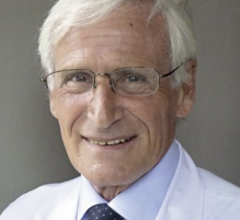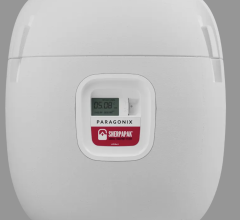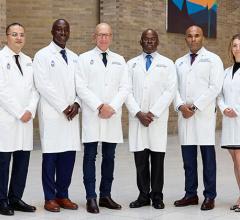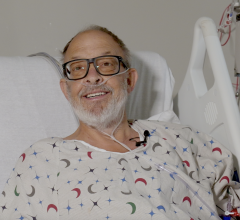
May 15, 2012 — A hybrid technique that combines coronary stenting with minimally invasive, robotically assisted bypass surgery both reduces the risk of surgical complications and speeds recovery in patients with multiple blockages of the coronary arteries, according to a study presented at the Society for Cardiovascular Angiography and Interventions (SCAI) 2012 Scientific Sessions on May 10.
The two-stage procedure avoids the need to split the chest in order to operate on the heart, as is done in conventional coronary artery bypass surgery. Instead, “keyhole” surgery is performed on a beating heart through small incisions between the ribs. With the aid of the da Vinci surgical robot, the cardiac surgeon reroutes blood flow around the most critical blockages using internal mammary arteries (IMA) taken from the chest and stitched to the heart. The remaining blockages are treated with percutaneous coronary intervention (PCI), a procedure that typically involves both angioplasty and stenting.
“With the hybrid procedure, we’re allowing patients to have the best of both worlds: the short recovery typical of PCI and the survival benefit of having an IMA grafted to the left anterior descending artery, which supplies blood to 60 percent of the heart muscle,” said Robert Poston, M.D., chief of cardiothoracic surgery at the University of Arizona in Tucson and an expert on hybrid procedures.
For the study, researchers followed up 32 consecutive patients for one year after treatment with the hybrid procedure. They tracked the patients’ clinical progress and compared the observed rate of major complications to the rate that would have been expected for each patient, had they undergone conventional open-chest coronary artery bypass surgery. Expected rates of complications were derived from widely used criteria developed by the Society of Thoracic Surgeons.
The Arizona team also tracked patients’ functional status and activity levels, using a standardized survey, the Duke Activity Status Index. They then translated this information into METS, a unit of measure that quantifies exercise capacity.
After the hybrid procedure, patients stayed in the hospital an average of 4.3 days. After one year, researchers found that patients treated with hybrid surgery were 16 percent less likely to die or experience major complications than would be expected for similar patients treated with conventional bypass surgery. At one month, patients were back to pre-surgical activity levels, with an average functional capacity of 8.3 METS. Some 85 percent of the patients reported being capable of performing yard work (4.5 METS) and running a short distance (8.0 METS).
The speed of recovery makes the hybrid procedure very appealing to patients when compared to open-chest bypass surgery, Poston said. “The difference is during the first three months,” he said. “After conventional bypass surgery, patients have a prolonged recovery that is disabling for them. Most people would seek any alternative so they could avoid that.”
The costs of the hybrid procedure are likely to be a little higher than conventional bypass surgery, because of the investment in the surgical robot and the costs of performing a separate PCI procedure. However, the important question is how cost-effective each approach is, said Sugam Bhatnagar, MBBS, MPH, and associate research scientist in cardiothoracic surgery at the University of Arizona.
“We can never look at costs without linking them with benefits,” said Bhatnagar. “The hybrid program clearly offers benefits in terms of better quality of life and quicker recovery. So even though there is a marginally higher cost to the hybrid procedure because of the extra PCI, the faster recovery and earlier return to baseline activity level take care of that.”
Poston and Bhatnagar report no potential conflicts of interest related to this study.
For more information: www.scai.org

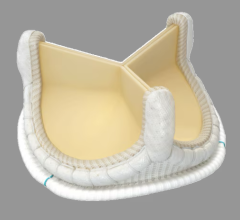
 April 23, 2024
April 23, 2024 


